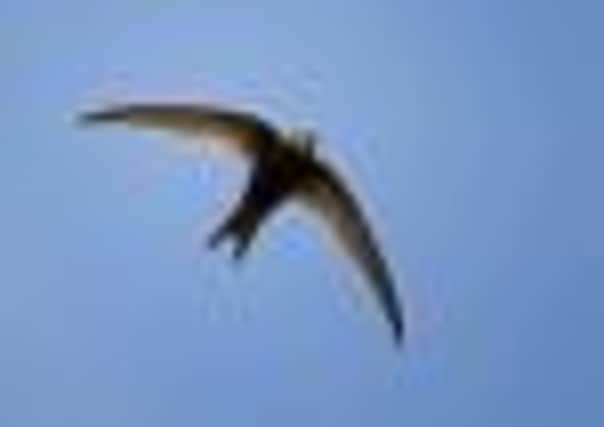Outdoors: They herald the summer but we could be in danger of losing our migrant birds


When I moved to Aberdeen in the 1980s, the main influx would occur a few days earlier than that, and now where I live in central Scotland, in the shadow of the Ochils, I usually see my first swifts around 8 May.
The swift is the last of our summer migrants to arrive, and also one of the first to leave, with most birds having departed southwards to their wintering grounds in sub-Saharan Africa by the beginning of August. It is an all too brief visit, for they are among our most captivating birds, spending virtually all their lives in the air, feeding and sleeping on the wing, and only landing to nest.
Advertisement
Hide AdSwifts are incredibly agile and it is great fun watching them on a warm summer evening, whooshing between houses, changing tack and direction with the sureness of a bat. They are like aerial trawlers, flying at great speed with their large open gapes sweeping up huge numbers of insects and airborne spiders. When there are young in the nest, it is often possible to see the parent birds with bulges in their throat sacs containing thousands of stored insects ready to feed the hungry chicks.
The swift is sometimes called the black martin in Scotland, and other local names include brown swallow and crane swallow, although despite the similarity in appearance the swift is not related to swallows and martins, instead belonging to the family Apodidae, which means no feet. Of course swifts do have feet, but because of their almost exclusively aerial life, they have very short legs that are only capable of clinging on to vertical surfaces and scrabbling into their nests in the holes of buildings. If a swift should have the misfortune to crash-land on to the ground, it is often unable to take to the air again, unless a passing person can provide a helping hand by throwing it into the sky.
The amount of time the swift spends on the wing is truly astonishing. Young birds may stay totally aloft for the first two or three years of their lives until they are ready to breed, snatching short periods of sleep by flying high then gliding. Swifts will even mate on the wing and can drink by skimming low over ponds and lakes and scooping up water, or by catching raindrops in flight.
Swifts are excellent indicators of changes in air pressure, and if the birds are flying high in the sky this can be a sign of good weather on the way, while birds swooping low can be the portent of a more unsettled spell. Indeed, swifts can fly great distances in search of food and will avoid centres of low pressure where possible. In such instances, when the parent birds are away for a long time seeking insect hotspots, the chicks in the nest will go into a state of torpor to conserve energy.
Although swifts do nest in natural sites such as cliffs and old woodpecker holes in trees, most in Scotland breed in holes under the gutters of old buildings, often in tenements. Unfortunately, modern houses, with their sealed eaves, don’t offer such breeding sites, and increasing numbers of older buildings are having their roofs and walls refurbished and holes plugged, denying swifts vital nesting locations and resulting in a recent steep decline in the population in Scotland and other parts of the UK.
Although there are now some laudable and often local council-led initiatives in many parts of Scotland to help swifts by installing nest boxes during house improvement and building schemes, one can’t help but feel there needs to be a sea-change in thinking on a much grander scale to ensure housing developers and individual homeowners fully take into account the need of swifts and other hole-nesting birds such as house sparrows and starlings, which have also experienced startling declines. Such birds are an integral and vital element of the urban scene, and our towns and cities would be terribly empty places if they were to disappear for good.